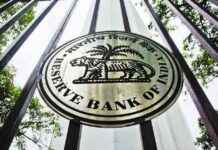**Inflation Concerns in FY26: The Impact of Higher Raw Material Costs**
**NEW DELHI:** Inflation is looming as a significant risk for the financial year 2026, with the escalating costs of raw materials at the forefront, according to a recent DAM Capital report. The report highlights that inflation is a top concern for FY26, with a projected decrease to 4.5 per cent from its current level. The primary driver behind the persistent inflationary pressure is domestic factors. The report underscores the pass-through effect of soaring raw material expenses, particularly in sectors like agriculture, food, and metals, as a key contributor to the ongoing inflationary trend. As demand surges, businesses are likely to pass on the increased costs to consumers by raising prices of essential goods and services.
### Impact of External Factors
External factors also pose a significant threat to India’s inflation outlook, with the ongoing tariff war and the devaluation of the Chinese Yuan being major concerns. The vulnerability of China’s economy is expected to result in a sharper devaluation of the Yuan compared to the Indian Rupee (INR), exerting additional pressure on India’s inflation levels. Moreover, geopolitical tensions and policies such as former U.S. President Donald Trump’s “Make America Great Again” agenda could lead to increased demand for the US dollar, further complicating India’s inflation dynamics.
### Relief Amidst Challenges
Despite the challenges posed by external factors, experts point out that China’s deflationary pressures and the consequent depreciation of the Yuan may offer some relief by making Chinese exports more competitive, potentially alleviating inflationary pressures in India. Another critical area to monitor is the performance of the Indian Rupee against the US dollar, which is expected to depreciate to an average of 86.50-87.0 against the dollar by FY26. This reflects a consistent weakening trend, with the Rupee slipping from a rate of 84 to 85 in just two months and further depreciation over the past year.
### Policy Measures and Economic Outlook
The report emphasizes that the Reserve Bank of India (RBI) is likely to permit this depreciation, although interventions using forex reserves and policy adjustments may be employed to prevent a drastic fall in the Rupee’s value. Experts suggest that the fair value of the Rupee, based on the Real Effective Exchange Rate (REER) index, is approximately 90, indicating that the INR is currently overvalued by more than 8 per cent. Under the stewardship of the new RBI governor, monetary policy is expected to strike a balance between fostering economic growth, addressing inflationary pressures, and safeguarding the Rupee from further depreciation, as per the report.
As we navigate the complex landscape of inflation and its multifaceted drivers, it is crucial to stay informed and vigilant about the evolving economic scenario. The interconnected nature of global markets underscores the need for proactive measures and strategic decision-making to mitigate risks and seize opportunities in this dynamic environment. Let us remain engaged, adaptable, and forward-thinking as we navigate the financial landscape together.























